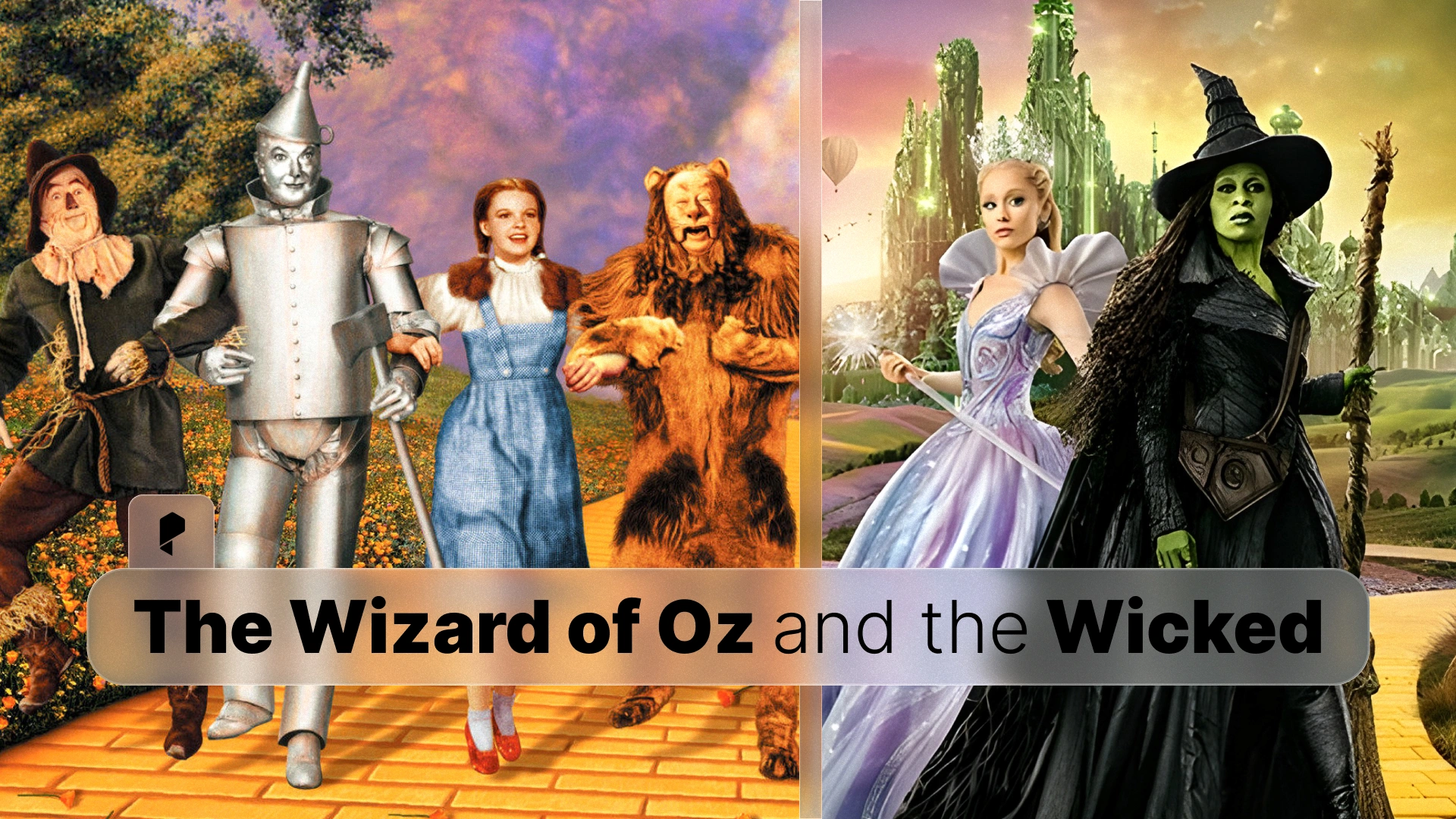Mastering Ground Level Shots in Film: Techniques, Examples, and Creative Uses for Filmmakers

- What is a Ground Level Shot
- Why Use Ground Level Shots in Filmmaking
- How to Execute a Ground Level Shot
- Examples of Ground Level Shots in Movies
- The Difference Between Ground Level Shots and Low Angle Shots
- Creative Applications of Ground Level Shots
- Common Mistakes to Avoid When Using Ground Level Shots
But what exactly is a ground level shot, and why do filmmakers use it so effectively? In this guide, we’ll break down the technique, explore iconic examples, and provide practical tips for executing it in your own projects.
For filmmakers looking to elevate their work with cinematic effects, using high-quality video templates can make the editing process smoother and more professional. Check out these After Effects templates for inspiration on incorporating dynamic visual techniques into your projects.
What is a Ground Level Shot?
Unlike a low-angle shot, which tilts upward to make a subject appear dominant, a ground level shot maintains a neutral or horizontal perspective. It’s commonly used in various film genres to emphasize movement, scale, or vulnerability.
Famous Examples of Ground Level Shots in Movies
- “Mad Max: Fury Road” (2015) – High-speed chases captured at ground level increase the sense of intensity and motion.
- “Inglourious Basterds” (2009) – The famous bar scene uses ground-level framing to build tension subtly.
- “The Dark Knight” (2008) – Many scenes featuring the Batpod are shot from ground level to emphasize speed and power.
By understanding the ground level meaning in cinematography, filmmakers can craft visually striking shots that elevate storytelling.
Why Use Ground Level Shots in Filmmaking?
Enhancing Realism and Intimacy
By bringing the camera down to the subject’s level, filmmakers can create a more personal connection with the audience. This perspective feels more grounded, placing the viewer directly in the shoes of the character. It’s especially effective in intimate moments, such as when a character is lying down or crawling.
Creating Unique Perspectives and Tension
Ground-level shots provide fresh viewpoints that break away from the typical eye-level framing. Whether it’s a character running or an object in motion, this angle intensifies the action and creates a heightened sense of urgency or suspense. Think of chase scenes or fight sequences—by getting the camera close to the ground, it heightens the drama.
Adding Depth and Scale
Using ground-level shots can also emphasize the vastness of a scene, helping to portray isolation or scale. For example, in films where characters are seen from a low angle in a wide-open space, the ground-level perspective makes the subject appear smaller, amplifying their vulnerability. It’s a great technique for establishing the environment or setting, providing depth that adds context to the narrative.
The power of a ground-level shot is closely tied to how it complements camera angles and types of camera angles. It’s important to experiment with different placements, like a knee-level shot or hip-level shot, to enhance visual storytelling.
How to Execute a Ground Level Shot
Equipment Needed
To capture a high-quality ground-level shot, the right equipment is key. A sturdy tripod or sliders can help keep the camera steady. For more dynamic shots, a stabilizer or gimbal will provide smooth movement, especially in action-packed scenes. You may also want to use a camera on the ground, which requires ensuring the camera remains steady without shaking or tilting.
Camera Placement Techniques
Positioning the camera at ground level can be tricky, but it’s crucial for getting the right perspective. Start by getting the camera as close to the ground as possible while keeping the shot framed well. Use wide-angle lenses for more dramatic results and better focus on the surrounding environment.
Lighting Considerations
Lighting is another important factor when working with ground-level shots. Since the camera is closer to the ground, it may interact with shadows differently. Ensure that your light source is positioned to minimize shadows that may obstruct the frame. Lighting at ground level also allows you to highlight specific elements, adding contrast to the shot.
For inspiration and ideas on adding visual effects that complement these techniques, check out these visual effects templates for After Effects, where you can learn how to integrate unique camera perspectives seamlessly into your videos.
Examples of Ground Level Shots in Movies
Action Sequences
In high-stakes action scenes, a ground-level shot can amplify the intensity and thrill. For example, in “The Matrix” (1999), the camera often captures action from ground level, allowing viewers to feel as if they are in the midst of the chaos. Whether it’s a character sprinting or fighting on the ground, this perspective immerses the audience into the action in a unique way.
Emotional Moments
Ground level shots can also deepen the emotional connection between characters and the audience. In “The Shawshank Redemption” (1994), there’s a powerful scene where the camera is positioned close to the ground as Andy Dufresne crawls through the sewer pipe, representing his desperate escape for freedom. This perspective not only increases the tension but also reflects the character’s vulnerability.
Establishing Shots
Another effective use of ground level shots is in establishing shots, where the camera captures the environment at eye-level with the terrain. Films like “The Revenant” (2015) often use this to highlight nature’s vastness, emphasizing the isolation and challenges faced by characters. By positioning the camera near the ground, filmmakers can create a more immersive and grounded view of the world.
These examples demonstrate how ground level shots can enhance storytelling by providing a fresh perspective on key moments, whether they’re action-packed or emotionally charged. You can also draw inspiration from the wide variety of cinematic styles available in resources like the After Effects templates to create ground-level shots in your own work.
The Difference Between Ground Level Shots and Low Angle Shots
Ground Level Shots
A ground level shot is when the camera is placed directly on the ground, offering a neutral or horizontal perspective. This angle doesn’t tilt up or down; it simply captures the scene at eye level with the subject, allowing for an authentic, immersive view. It’s perfect for emphasizing a subject’s vulnerability, powerlessness, or connection to the environment.
Low Angle Shots
In contrast, a low angle shot is taken from below the subject, with the camera pointing upward. This angle serves to elevate the subject, making them appear larger, more dominant, or imposing. A great example is when directors use low-angle shots to create a sense of grandeur or heroism, as seen in “Star Wars” (1977) when the camera looks up at Darth Vader or Luke Skywalker.
While both techniques use unique camera angles, the ground level shot stays neutral in its positioning, while the low angle shot manipulates the subject’s power and perspective. Understanding the distinction allows filmmakers to pick the right technique based on the emotion or narrative they wish to convey.
Creative Applications of Ground Level Shots
Conveying Vulnerability or Powerlessness
One of the most striking uses of ground level shots is to emphasize a character’s vulnerability. When a character is lying on the ground, whether injured or overwhelmed, the low perspective amplifies their helplessness. A great example is in “Saving Private Ryan” (1998), where the camera often follows soldiers crawling on the ground during combat. This positioning pulls the audience into the dire situation, making them feel the pressure of the character’s experience.
Dynamic Action Sequences
In action-packed films, ground level shots can add an intense dynamic. For instance, during fast-paced chase scenes or combat, placing the camera at the ground level adds a sense of urgency and realism. In movies like “Mad Max: Fury Road” (2015), the filmmakers use ground-level perspectives to give viewers the feeling of being right in the middle of the chaos, whether it’s a speeding vehicle or an explosive action moment.
Horror or Suspense
Ground level shots are also often used in horror and suspense films to build tension. The angle can create an eerie sense of isolation or vulnerability, especially when characters are being stalked or hunted. In “The Blair Witch Project” (1999), the camera often stays at ground level, evoking feelings of fear and suspense as the characters are lost in the woods. The low perspective adds to the claustrophobic atmosphere, trapping the audience in the unsettling world of the characters.
Exploring these creative applications shows how versatile ground level shots can be, influencing not only the aesthetic but also the emotional impact of a scene. If you’re looking to experiment with this technique in your own projects, you can explore various resources, including tools like After Effects templates, to enhance your camera angles and cinematic style.
Common Mistakes to Avoid When Using Ground Level Shots
Overuse Without Purpose
The most important thing when using ground level shots is ensuring they serve a purpose within the story. Overusing this angle without clear intention can make a scene feel redundant or visually overwhelming. It’s crucial to mix up the camera angles to maintain visual interest and avoid fatigue for the audience.
Poor Framing or Composition
When the camera is positioned at ground level, poor framing can easily ruin a shot. Pay close attention to the background and the subject’s positioning to ensure the composition is visually appealing. For instance, an overly cluttered or distracting background can draw attention away from the subject and break the immersion. Always take time to consider what’s visible in the shot, making sure the focus stays on the subject and their actions.
Unsteady Camera Movement
Since the camera is closer to the ground, any unintended shakes or movements are more noticeable. Ensure that your equipment—whether it’s a tripod, slider, or stabilizer—is set up securely to prevent wobbling. Even slight vibrations can ruin the intended effect of a ground level shot, especially in action scenes.
To avoid these mistakes, it’s important to plan each ground level shot carefully. Think about the visual storytelling you want to achieve, consider the technical aspects of camera movement, and ensure that your framing enhances the scene rather than detracts from it. By using ground level shots thoughtfully, you can enhance the emotional and narrative impact of your film.
Conclusion
By understanding the key differences between ground level and low angle shots, learning the technical aspects of executing them, and exploring their creative applications, you can confidently incorporate this technique into your own projects. Don’t be afraid to experiment with this cinematic tool and let it bring your stories to life in new and exciting ways.
If you’re looking to elevate your filmmaking, why not try out resources like Visual Effects Templates or After Effects Templates to help bring your ground level shots to the next level? With the right tools and techniques, you can master this powerful visual storytelling tool and create films that resonate with your audience.
If you buy something through our links, we may earn an affiliate commission or have a sponsored relationship with the brand, at no cost to you. We recommend only products we genuinely like. Thank you so much.





